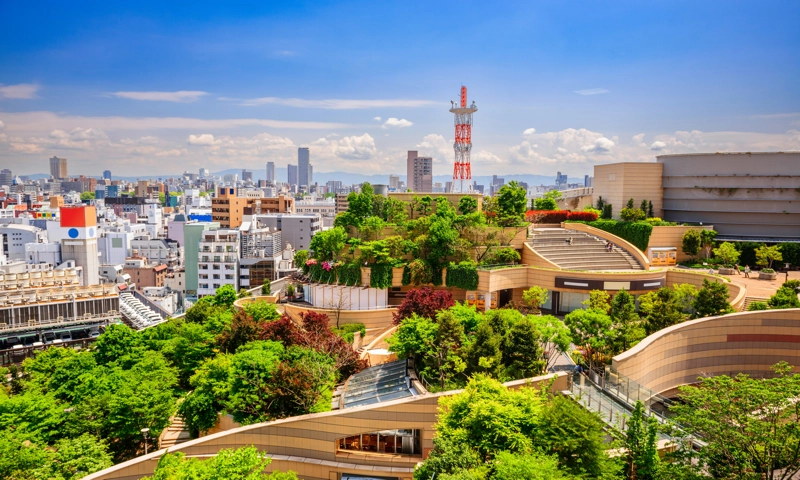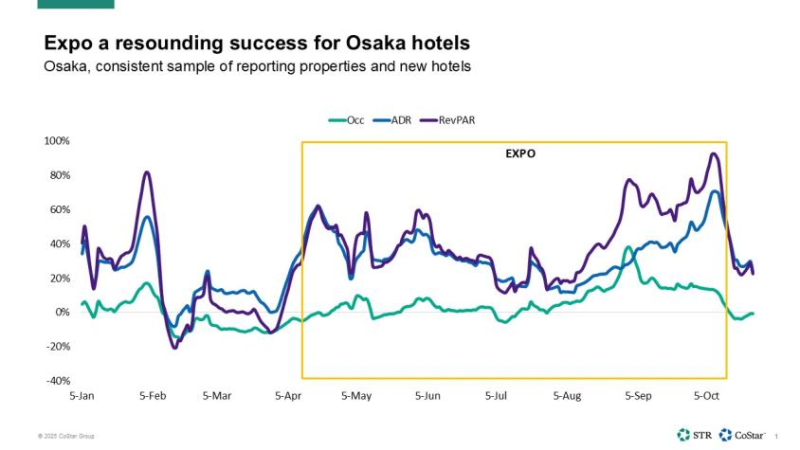
Osaka’s Hotel Industry Thrives During Expo 2025 with Record Occupancy Rates – Image Credit Unsplash+
Expo 2025, held in Osaka, Japan, has concluded its six-month run, leaving a significant impact on the local and regional hotel industry. The event, which took place on Yumeshima Island from mid-April to mid-October, showcased innovations and addressed global challenges, drawing visitors from around the world. The Expo’s success is reflected in the substantial growth in revenue per available room (RevPAR) and occupancy rates across Osaka’s hotel market.
Hotel Performance During Expo 2025

Throughout the Expo period, Osaka’s hotel industry experienced remarkable growth, with RevPAR (Revenue per Available Room) maintaining double-digit increases. The average daily rate (ADR) saw its peak during the Expo’s closing week, resulting in a nearly 100% year-over-year increase in RevPAR for those final days. Occupancy rates were also impressive, consistently remaining above 80%, despite Osaka having more than 98,000 hotel rooms available. This performance is noteworthy in comparison to previous Expo hosts, such as Dubai and Milan, which had different room capacities and market dynamics.
Luxury Hotel Segment Performance
In the luxury hotel segment, occupancy growth was particularly notable. Luxury hotels in Osaka experienced a 24% year-over-year increase in occupancy, averaging 73% for the six-month period. While this figure is lower than the overall market occupancy, it aligns with typical trends for luxury accommodations, which often report lower occupancy rates compared to other hotel classes.
Comparative Analysis with Previous Expos
Osaka’s performance in Expo 2025 surpassed that of previous hosts in terms of occupancy. The city achieved an impressive 83% occupancy rate over the six months, although its ADR was the lowest among recent Expo hosts. Market dynamics, such as Osaka’s traditionally lower ADR compared to Milan and Dubai, played a significant role in this outcome. Despite this, Osaka posted a strong 31% ADR growth, outpacing Milan’s 27% growth.
Impact on Regional Connectivity and Beyond
Kansai International Airport’s connectivity facilitated easy access for Expo attendees, reducing the need for transit through Tokyo. Consequently, Osaka’s occupancy rates approached those of Tokyo, though Tokyo maintained higher ADRs. The Expo’s influence extended beyond Osaka, also impacting Tokyo’s hotel performance. While both occupancy and ADR increased in Tokyo, the growth rate slowed as the year progressed, potentially due to some demand shifting to Osaka.
Conclusion
Expo 2025 has demonstrated the significant impact that World Expos can have on the hotel industries of host cities. With occupancy rates nearing or exceeding 80% and double-digit ADR growth, the event has set a benchmark for future hosts. The next World Expo is scheduled to take place in Riyadh in October 2030, where similar economic benefits are anticipated.
Discover more at STR.


AloJapan.com